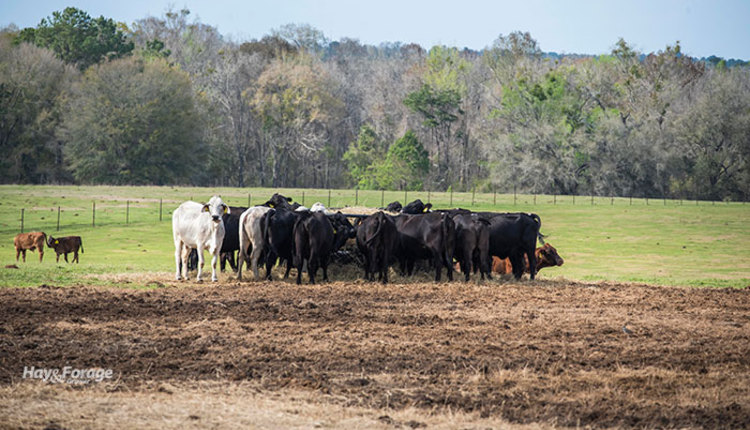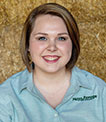Spring brings storage and feedout losses |
| By C.J. Weddle |
|
|
 Having a quality storage system is just as important as having quality forage. Without proper storage, you may experience up to 60% waste in hay before it ever makes it to the cattle. In the case of large round bales, storage on the ground with no covering will have almost four times as much loss as bales that are placed on a well-drained base and covered. Iowa State University Extension Beef Specialist Denise Schwab recently offered a few reminders of how feed spoilage and loss can affect not just feed costs but also herd health. Similar to storage options, feedout environments can also impact feed loss. Schwab cited a Michigan State University study in which ring feeders with an elevated center cone resulted in 3.5% feeding loss, while stationary cradle feeders had 14.6% waste. Feeding on the ground without any feeder typically results in 20% to 30% loss. “Both storage and feeding losses add to increased feed costs for the cow herd,” Schwab notes. “For a cow provided 40 pounds of hay at $120 per ton with 10% waste, that equals $7.20 per cow per month in feed loss. For $45 per ton silage, 10% feed loss at 50 pounds of silage consumption is $3.37 per cow per month in feed loss.” The ultimate contaminate Mud presents its own set of challenges. While wading through mud raises the energy requirement for cattle, it also creates an environment that easily contaminates feed, elevating the ash content. Mud often contains manure as well, which can carry disease vectors such as Clostridium bacteria. The best way to prevent mud and fecal contamination is to store and feed forage on concrete pads. When this is not an option, scout for a location that is elevated and well-drained. “Consider adding rock or limestone to make a more solid base that also has good drainage,” Schwab recommends. As noted, location plays an important role in preventing waste and other associated challenges, but having enough bunk space for cattle also plays a role. Added aggression for access to the bunk will lead to greater amounts of wasted feed. The beef specialist urges caution in respect to minimizing the ash content of fed forages. Typically, the ash content of forages is under 10%. While ash content is not a critical value in and of itself, elevated levels can represent higher concentrations of iron and other minerals. “Weather-damaged forages are typically higher in ash from soil contact at harvest,” she explains. “Drought, floods, and the recent derecho all can increase the ash content of 2020 forages.” High levels of ash in forages may result in minerals competing with other minerals for absorption within the cow. “Soil is often high in iron, which causes a decrease in manganese absorption,” Schwab notes. “Because manganese is important in bone and cartilage development in a fetus, manganese deficiency can lead to increased risk for the birth defect chondrodysplasia.” After growing and harvesting or purchasing quality forages, it’s important to conserve that quality throughout the storage and feeding periods. Keep forage covered, and store it in a well-drained location. Finally, minimize feedout losses by selecting a dry area and providing adequate bunk or feeding space.  C.J. Weddle C.J. Weddle served as the 2020 Hay & Forage Grower editorial intern. She currently attends Mississippi State University, majoring in agricultural education, leadership, and communications. She grew up on a farm in Vardaman, Miss., where her family raises sweet potatoes and soybeans. |
